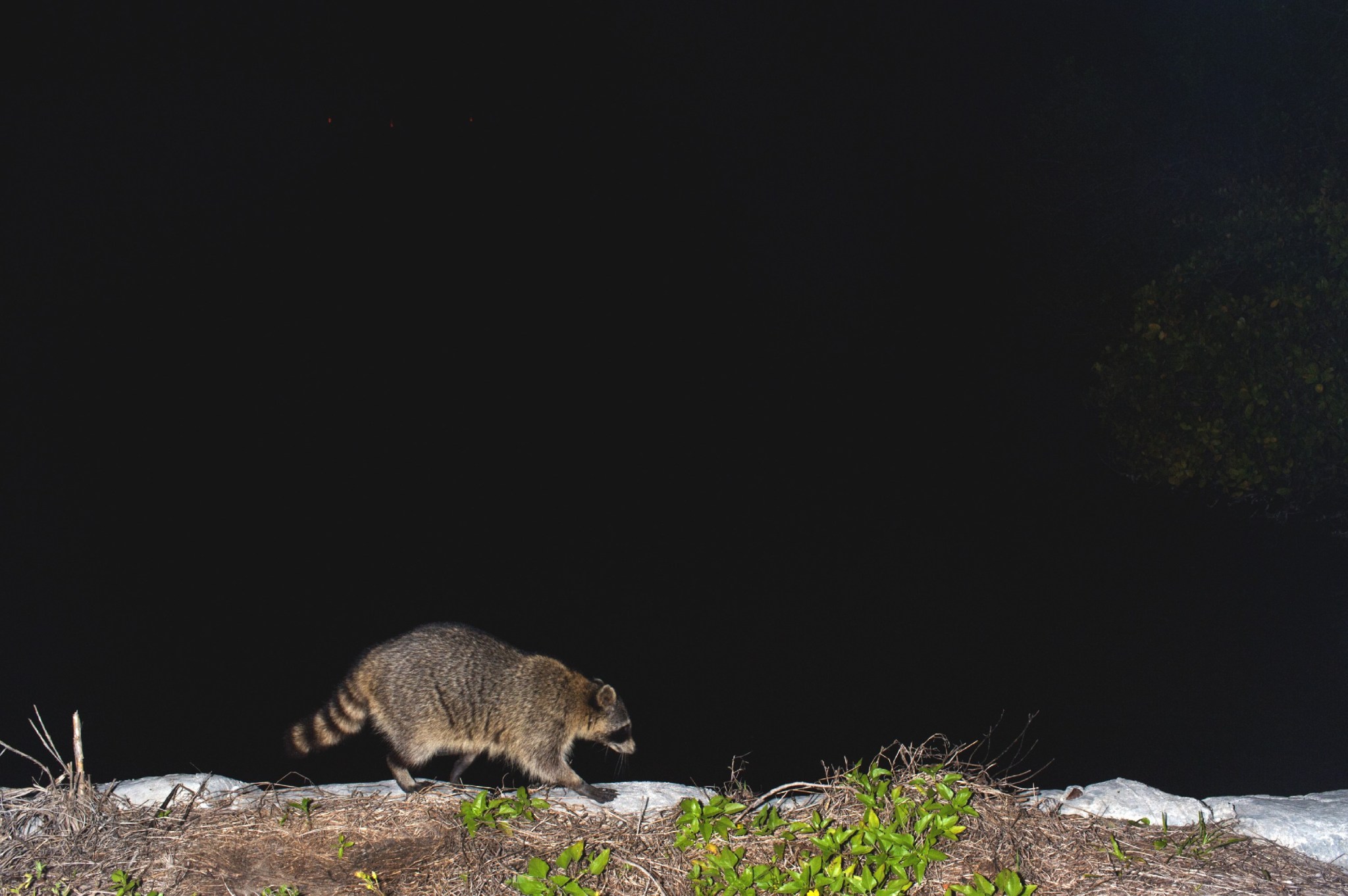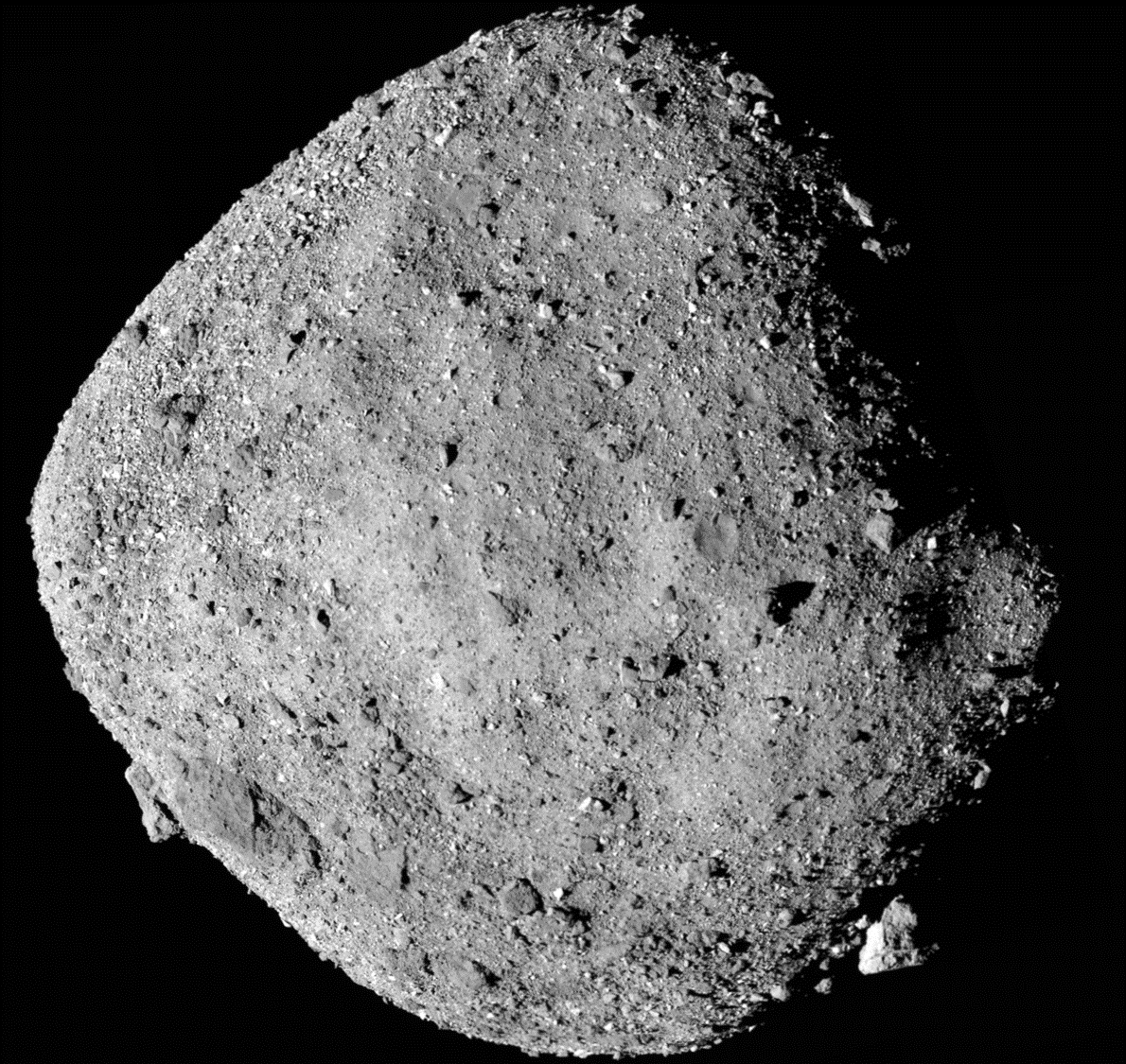In This Week’s Star
- Center Director Jody Singer Welcomes Back Team Members at Jan. 31 All-Hands
- Crews Lift the SLS Liquid Hydrogen Tank Test Article in Test Stand
- NASA Completes SLS Booster Motor Segments for First Test Flight
- Marshall, NASA to Honor Fallen Heroes Feb. 7
- Top Four Teams Share $300,000 Prize in Seal Test Stage of 3D-Printed Habitat Challenge
- Astronomers Find Dark Energy May Vary Over Time
- NASA’s OSIRIS-REx Spacecraft Enters Close Orbit Around Bennu, Breaking Record
- NASA’s New Horizons Mission Reveals Newest View of Ultima Thule
- This Week in NASA History: Hydrostatic Testing of S-IC Test Fuel Tank – Feb. 8, 1964
- Obituaries
Center Director Jody Singer Welcomes Back Team Members at Jan. 31 All-Hands
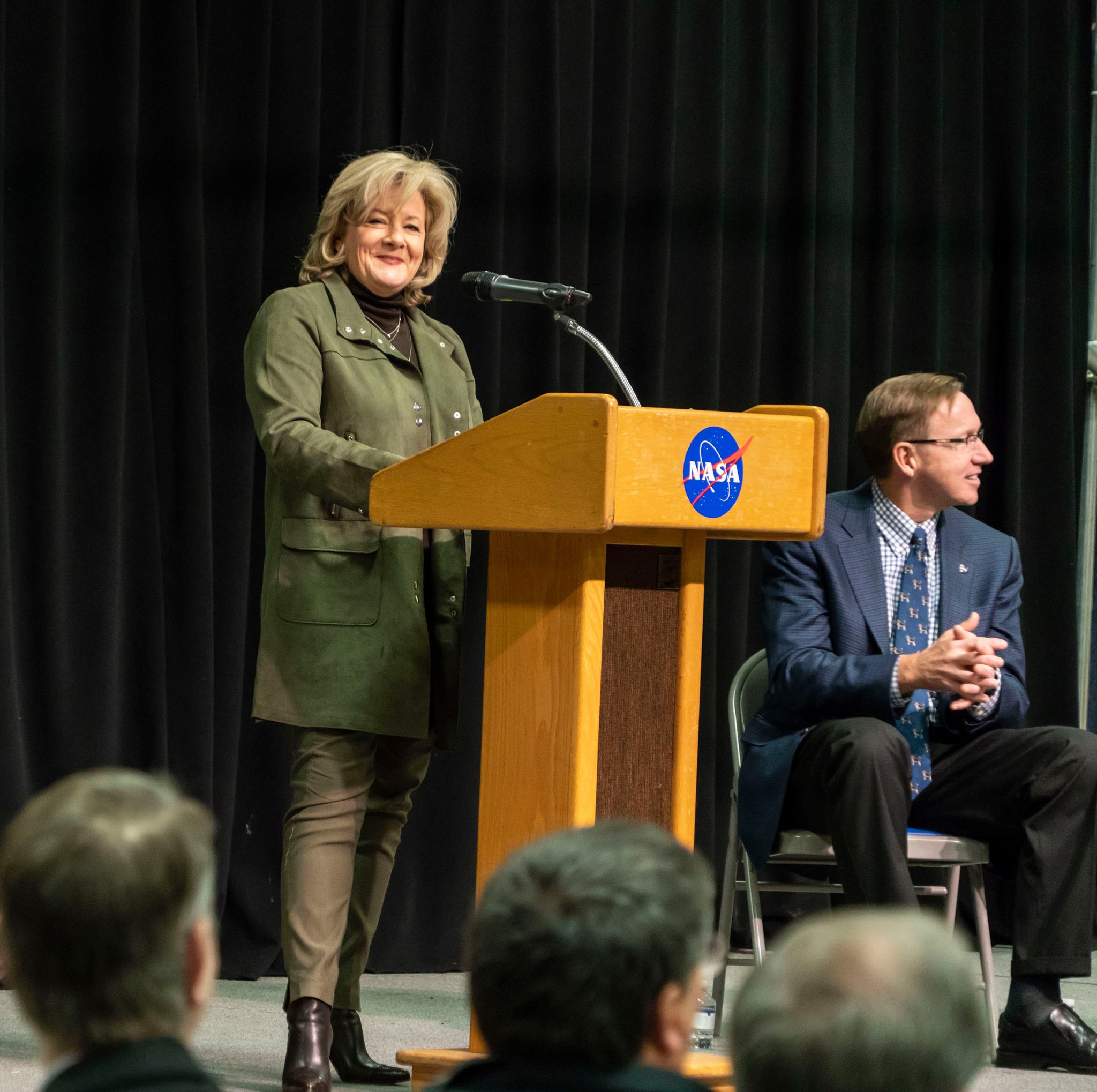
“I saw a lot of character and selflessness trying to help one another while we were away,” said Singer. “Each and every one of you are important. You are valuable to what we do in exploration and discovery.” Singer recapped Marshall’s 2018 accomplishments and updated the workforce on the center’s return to normal operations. Credits: NASA/Fred Deaton
At a Jan. 31 all-hands meeting, NASA Marshall Space Flight Center Director Jody Singer welcomed team members back following a 35-day government furlough. “I saw a lot of character and selflessness trying to help one another while we were away,” said Singer. “Each and every one of you are important. You are valuable to what we do in exploration and discovery.” Singer recapped Marshall’s 2018 accomplishments and updated the workforce on the center’s return to normal operations. (NASA/Fred Deaton)
Crews Lift the SLS Liquid Hydrogen Tank Test Article in Test Stand
Crews loaded the 149-foot liquid hydrogen tank structural test article, the largest piece of structural test hardware for the core stage of NASA’s Space Launch System, into Test Stand 4693 Jan. 14 at NASA’s Marshall Space Flight Center. During testing, dozens of hydraulic cylinders in the test stand will push and pull on the tank to simulate the stresses and loads it will endure during liftoff and flight. Test Stand 4693 is one of the newest test stands at Marshall, and the liquid hydrogen structural test article is the first piece of hardware to be tested in the stand. Learn more here: https://www.nasa.gov/exploration/systems/sls/index.html (NASA/Tyler Martin)
NASA Completes SLS Booster Motor Segments for First Test Flight
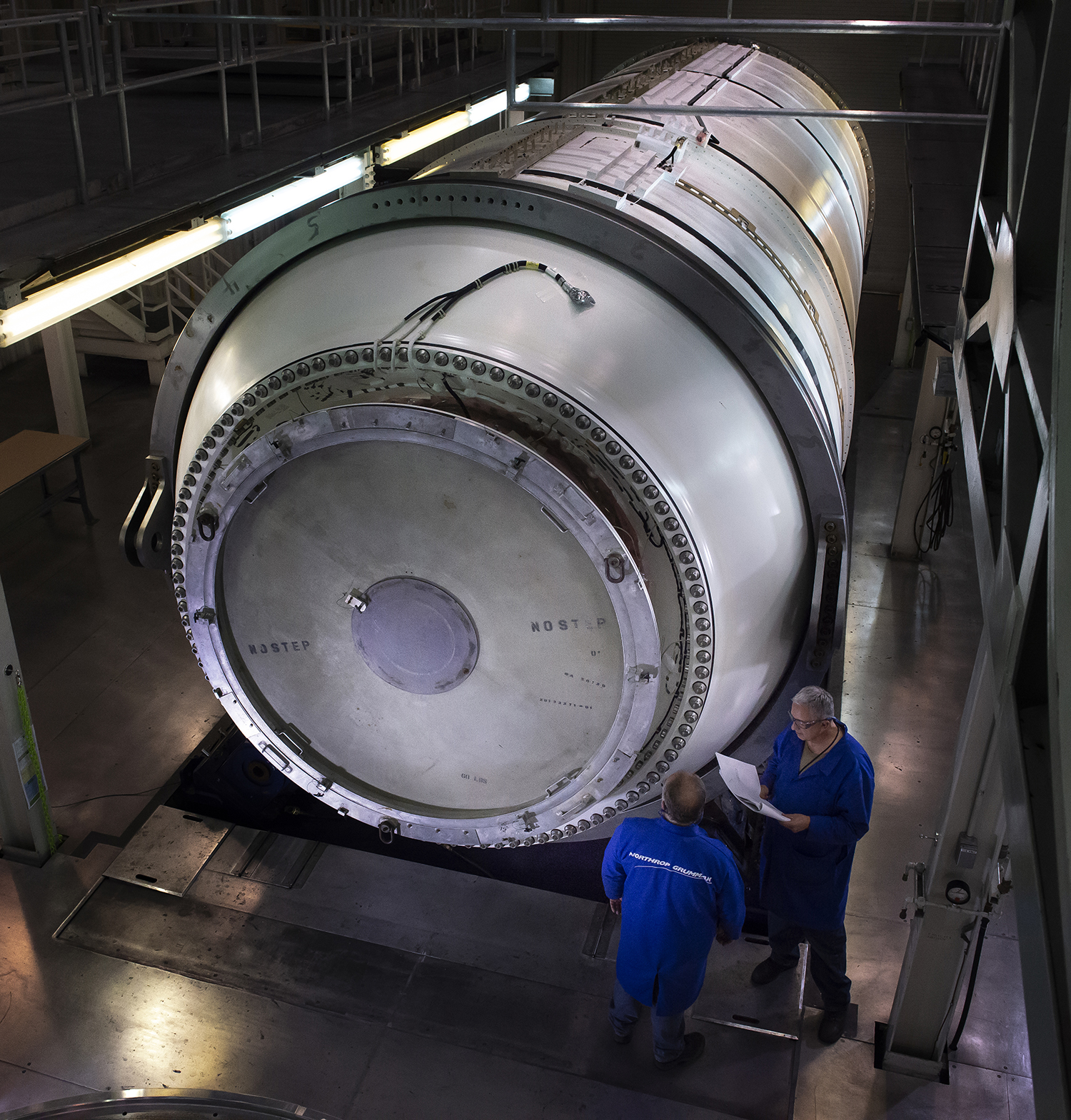
NASA and its industry partners have completed manufacture and checkout of 10 motor segments that will power two of the largest solid propellant boosters ever built. The solid rocket fuel will help produce 8.8 million pounds of thrust to send NASA’s Space Launch System rocket on its first integrated flight with the Orion spacecraft. Technicians at Northrop Grumman in Promontory, Utah, in coordination with SLS program leads at NASA’s Marshall Space Flight Center, finalized the fabrication of all 10 motor segments and fitted them with key flight instrumentation. They’ll be shipped to NASA’s Kennedy Space Center, joined with booster forward and aft assemblies, and readied to power the SLS Exploration Mission-1 test flight when it launches from Kennedy. The uncrewed test launch will pave the way for a new era of groundbreaking science and exploration missions beyond low-Earth orbit, carrying crew and cargo to the Moon and on to Mars. Marshall manages the Space Launch System for NASA. Learn more here. (NASA/Northrop Grumman)
Marshall, NASA to Honor Fallen Heroes Feb. 7
By Rick Smith
On Feb. 7, NASA’s Marshall Space Flight Center will join NASA Headquarters, field centers and facilities nationwide to honor members of the NASA family who lost their lives while furthering the cause of exploration and discovery, including the crews of Apollo 1 and space shuttles Challenger and Columbia.
Marshall will host a candle-lighting ceremony at 9 a.m. in the lobby of Building 4200. Speakers will include Marshall Director Jody Singer; Rick Burt, director of Marshall’s Safety and Mission Assurance Directorate; and former NASA astronaut Jan Davis, now a program manager at Bastion Technologies of Huntsville.
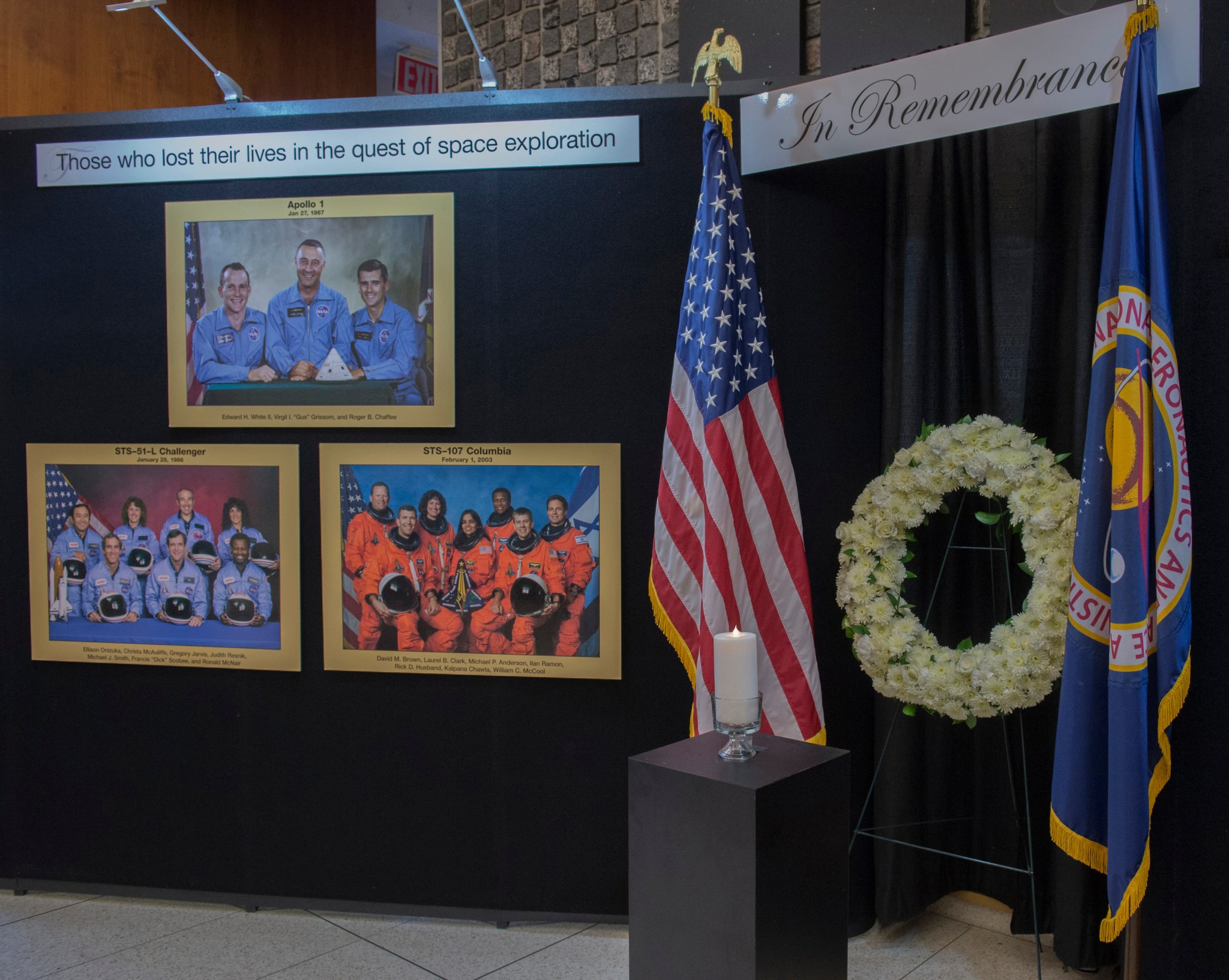
NASA Administrator Jim Bridenstine and other agency officials will lead an observance at Arlington National Cemetery in Virginia starting at noon CST. A wreath-laying ceremony will be held at the Tomb of the Unknown Soldier, followed by observances for the Apollo 1, Challenger and Columbia crews. For details, visit:
The agency also is paying tribute to its fallen astronauts with special online content available Feb. 6 at:
Smith, an ASRC Federal/Analytical Services employee, supports Marshall’s Office of Strategic Analysis & Communications.
Top Four Teams Share $300,000 Prize in Seal Test Stage of 3D-Printed Habitat Challenge
Four teams will share a $300,000 prize for successful completion of the seal test stage of the 3D-Printed Habitat Challenge, a competition to create sustainable shelters suitable for the Moon, Mars or beyond using resources available on site in these locations. For this level of the competition, teams submitted 3D-printed samples that were tested for their ability to hold a seal, for strength and for durability in temperature extremes.
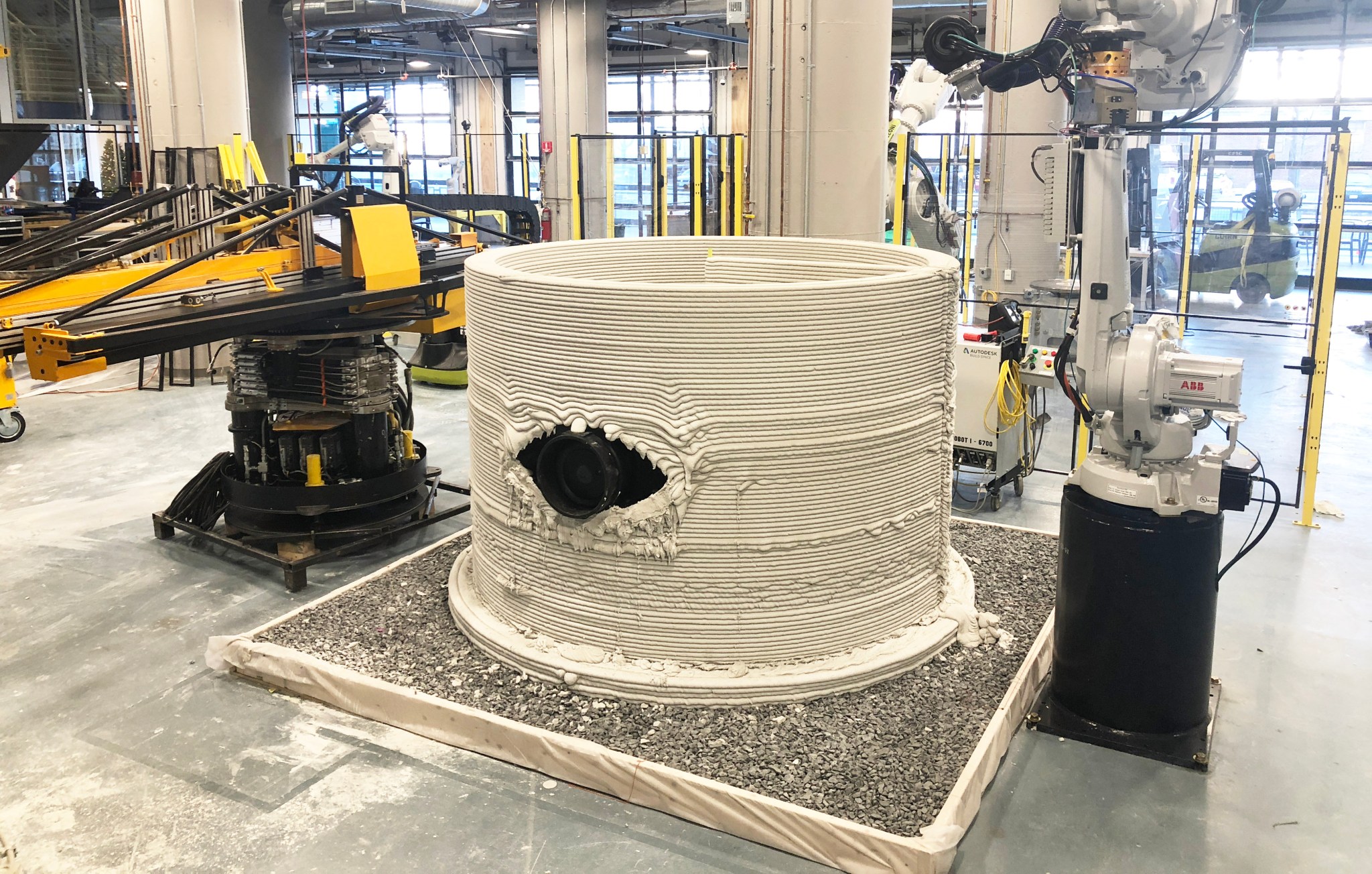
Six teams submitted entries to the competition, and after evaluation by a team of judges, NASA and challenge partner Bradley University of Peoria, Illinois, awarded the following teams:
- SEArch+/Apis Cor – New York – $104,987.46
- AI. SpaceFactory – New York – $88,353.30
- Pennsylvania State University – State College – $83,755.92
- Colorado School of Mines and ICON- Golden, Colorado – $22,903.32
The 3D-Printed Habitat Challenge, which began in 2015, is structured in phases, each with multiple levels, testing the teams in several areas of 3D printing, including modeling software, material development and construction. Challenge phases to date include:
- Phase 1, (completed) the Design Competition, required teams to submit architectural renderings and was completed in 2015. ($50,000 prize purse)
- Phase 2, (completed) the Structural Member Competition, focused on material technologies, requiring teams to create structural components. It was completed in 2017. ($1.1 million prize purse)
- Phase 3 (current), the On-Site Habitat Competition, comprises five levels that test teams’ ability to advance technology to autonomously construct a habitat and will culminate in a head-to-head habitat print in April 2019. There are two software design levels and three construction levels. The seal test level that teams just completed is the final construction level teams must pass to be eligible to compete in the final level, a head-to-head printing of a structure. ($2 million prize purse)
The challenge is managed through a partnership with NASA’s Centennial Challenges program and Bradley University. Bradley has partnered with sponsors Caterpillar, Bechtel, Brick & Mortar Ventures and the U.S. Army Corps of Engineers to administer the competition. NASA’s Centennial Challenges program is part of the agency’s Space Technology Mission Directorate, and is managed at NASA’s Marshall Space Flight Center.
Astronomers Find Dark Energy May Vary Over Time
A new study using data from NASA’s Chandra X-ray Observatory and the European Space Agency’s XMM-Newton suggests that dark energy may have varied over cosmic time. This illustration helps explain how astronomers tracked the effects of dark energy to about one billion years after the Big Bang by determining the distances to quasars, rapidly growing black holes that shine extremely brightly.
First discovered about 20 years ago by measuring the distances to exploded stars called supernovas, dark energy is a proposed type of force, or energy, that permeates all space and causes the expansion of the universe to accelerate. Using this method, scientists tracked the effects of dark energy out to about 9 billion years ago.
The latest result stems from the development of a new method to determine distances to about 1,598 quasars, which allows the researchers to measure dark energy’s effects from the early universe through to the present day. Two of the most distant quasars studied are shown in Chandra images in the insets.
The new technique uses ultraviolet (UV) and X-ray data to estimate the quasar distances. In quasars, a disk of matter around the supermassive black hole in the center of a galaxy produces UV light (shown in the illustration in blue). Some of the UV photons collide with electrons in a cloud of hot gas (shown in yellow) above and below the disk, and these collisions can boost the energy of the UV light up to X-ray energies. This interaction causes a correlation between the amounts of observed UV and X-ray radiation. This correlation depends on the luminosity of the quasar, which is the amount of radiation it produces.
Using this technique, the quasars become standard candles, as implied by the illustration. Once the luminosity is known, the distance to the quasars can be calculated from the observed amount of radiation.
The researchers compiled UV data for 1,598 quasars to derive a relationship between UV and X-ray fluxes, and the distances to the quasars. They then used this information to study the expansion rate of the universe back to very early times, and found evidence that the amount of dark energy is growing with time.
Since this is a new technique, the astronomers took extra steps to show that this method gives reliable results. They showed that results from their technique match up with those from supernova measurements over the last 9 billion years, giving them confidence that their results are reliable at even earlier times. The researchers also took great care in how their quasars were selected, to minimize statistical errors and to avoid systematic errors that might depend on the distance from Earth to the object.
A paper on these results appears in Nature Astronomy on Jan. 28, by Guido Risaliti from the University of Florence, Italy, and Elisabeta Lusso from Durham University, United Kingdom.
NASA’s Marshall Space Flight Center manages the Chandra program for NASA’s Science Mission Directorate. The Smithsonian Astrophysical Observatory in Cambridge, Massachusetts, controls Chandra’s science and flight operations.
NASA’s OSIRIS-REx Spacecraft Enters Close Orbit Around Bennu, Breaking Record
On Dec. 31, while many on Earth prepared to welcome the New Year, NASA’s OSIRIS-REx spacecraft — 70 million miles away — carried out a single, eight-second burn of its thrusters and broke a space exploration record. The spacecraft entered into orbit around the asteroid Bennu, and made Bennu the smallest object ever to be orbited by a spacecraft. Now, the spacecraft will circle Bennu about a mile from its center, closer than any other spacecraft has come to its celestial object of study. The spacecraft is scheduled to orbit Bennu through mid-February at a leisurely 62 hours per orbit and will resume science operations in late February. At that point, the spacecraft will perform a series of close flybys of Bennu for several months to take high-resolution images of every square inch of the asteroid to help select a sampling site. During the summer of 2020, the spacecraft will briefly touch the surface of Bennu to retrieve a sample. The OSIRIS-REx mission is scheduled to deliver the sample to Earth in September 2023. OSIRIS-REx is the third mission in NASA’s New Frontiers Program, which is managed by NASA’s Marshall Space Flight Center for the agency’s Science Mission Directorate in Washington. (NASA/Goddard/University of Arizona)
NASA’s New Horizons Mission Reveals Newest View of Ultima Thule
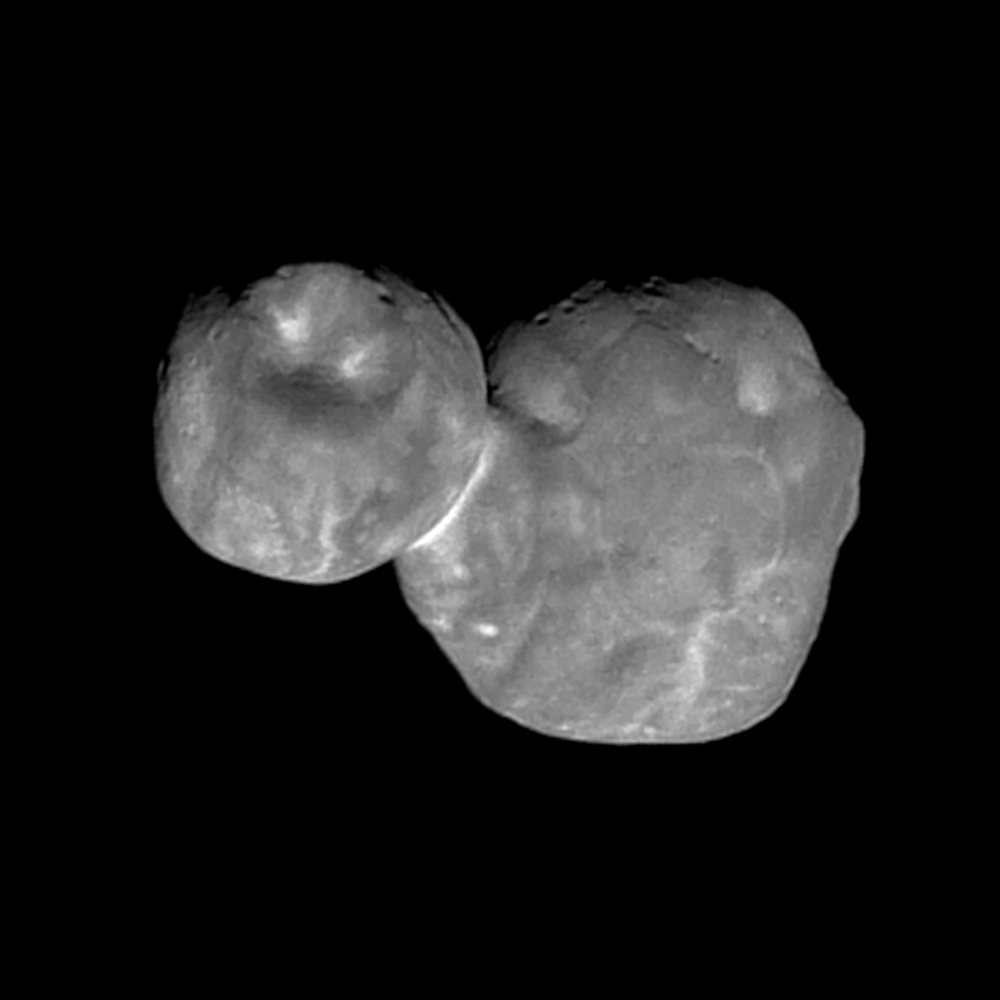
NASA’s New Horizons spacecraft successfully flew past Ultima Thule in the early hours of New Year’s Day, ushering in the era of exploration from the enigmatic Kuiper Belt, a region of primordial objects that holds keys to understanding the origins of the solar system. The following day, scientists released the first detailed images of the most distant object ever explored. Ultima Thule’s remarkable appearance, unlike anything seen before, illuminates the processes that built the planets 4.5 billion years ago. This image, obtained with the wide-angle Multicolor Visible Imaging Camera component of New Horizons’ Ralph instrument on Jan. 24, was taken when the object was 4,200 miles from the spacecraft and revealed Ultima Thule as a “contact binary,” consisting of two connected spheres. End to end, the world measures 19 miles in length. The team has dubbed the larger sphere “Ultima” (12 miles across) and the smaller sphere “Thule” (9 miles across). New Horizons is part of the New Frontiers Program managed by NASA’s Marshall Space Flight Center. (NASA/Johns Hopkins University Applied Physics Laboratory/Southwest Research Institute)
This Week in NASA History: Hydrostatic Testing of S-IC Test Fuel Tank – Feb. 8, 1964
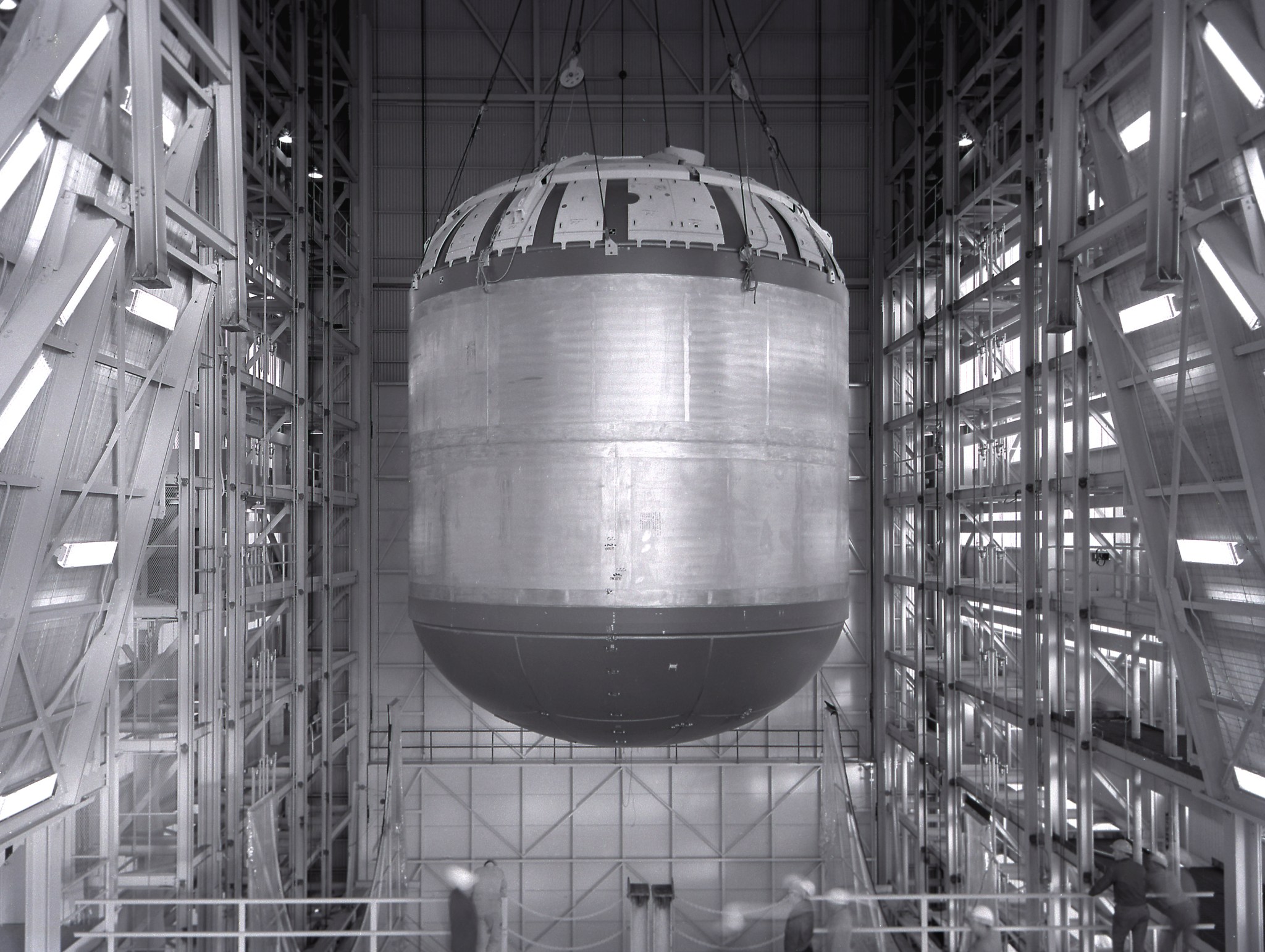
This week in 1964, hydrostatic testing of the Saturn V S-IC — the first stage test fuel tank — was successfully conducted at NASA’s Marshall Space Flight Center. The S-IC stage was powered by five F-1 engines, which used liquid oxygen and kerosene as its propellants. When completely assembled, the Saturn V S-IC stage was 138 feet tall, 33 feet in diameter, and capable of delivering 7.5 million pounds of thrust from its five engines. Now through December 2022, NASA will mark the 50th anniversary of the Apollo Program that landed a dozen astronauts on the Moon between July 1969 and December 1972, and the first U.S. crewed mission — Apollo 8 — that circumnavigated the Moon in December 1968. The NASA History Program is responsible for generating, disseminating, and preserving NASA’s remarkable history and providing a comprehensive understanding of the institutional, cultural, social, political, economic, technological and scientific aspects of NASA’s activities in aeronautics and space. For more pictures like this one and to connect to NASA’s history, visit the Marshall History Program’s webpage. (NASA)
Obituaries
John D. Capps, 85, of Huntsville, died Jan. 19. He retired from the Marshall Center in 1994 as a computer engineer. He is survived by his wife, Linda G. Capps.
Wilma N. Miller, 87, of Huntsville, died Jan. 12. She retired from the Marshall Center in 1970 as a photographer. She is survived by her husband, George Miller.
Vaughn H. Yost, 82, of Huntsville, died Jan. 10. He retired from the Marshall Center in 2006 as senior project engineering manager of production engineering. He is survived by his wife, Barbara C. Yost.
Carl M. Davis, 83, of Owens Cross Roads, Alabama, died Dec. 30. He retired from the Marshall Center in 1993 as an aerospace engineer.
Jack J. Nichols, 83, of Huntsville, died Dec. 19. He retired from the Marshall Center in 1990 as an aerospace engineer.
Alex K. Priskos, 59, of Huntsville, died Dec. 31. He began working at the Marshall Center in 2005, where he was still employed as the Space Launch System Systems engineering and integration manager at the time of his death.
Jeffrey Draper, 56, of Huntsville, died Jan. 12. He began working at the Marshall Center in 1984 where he was still employed as a budget analyst in the Chief Financial Office.


























